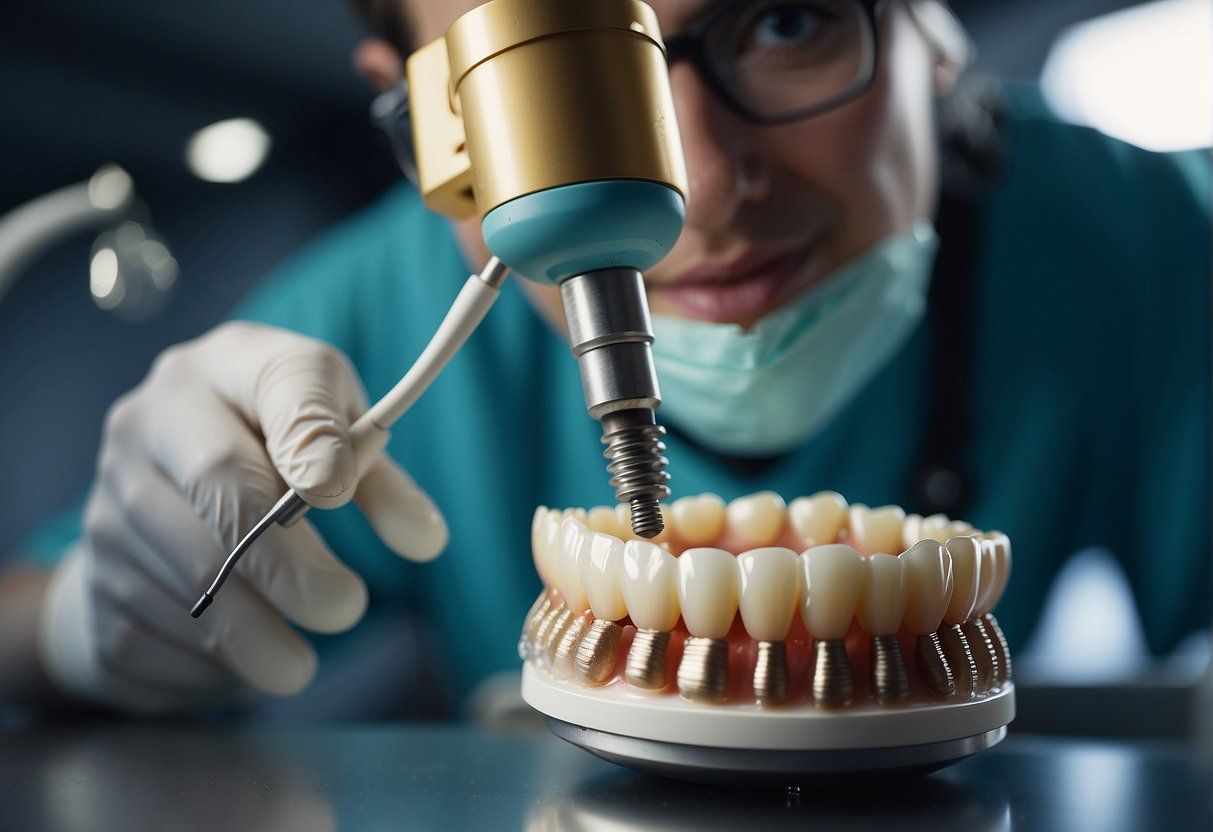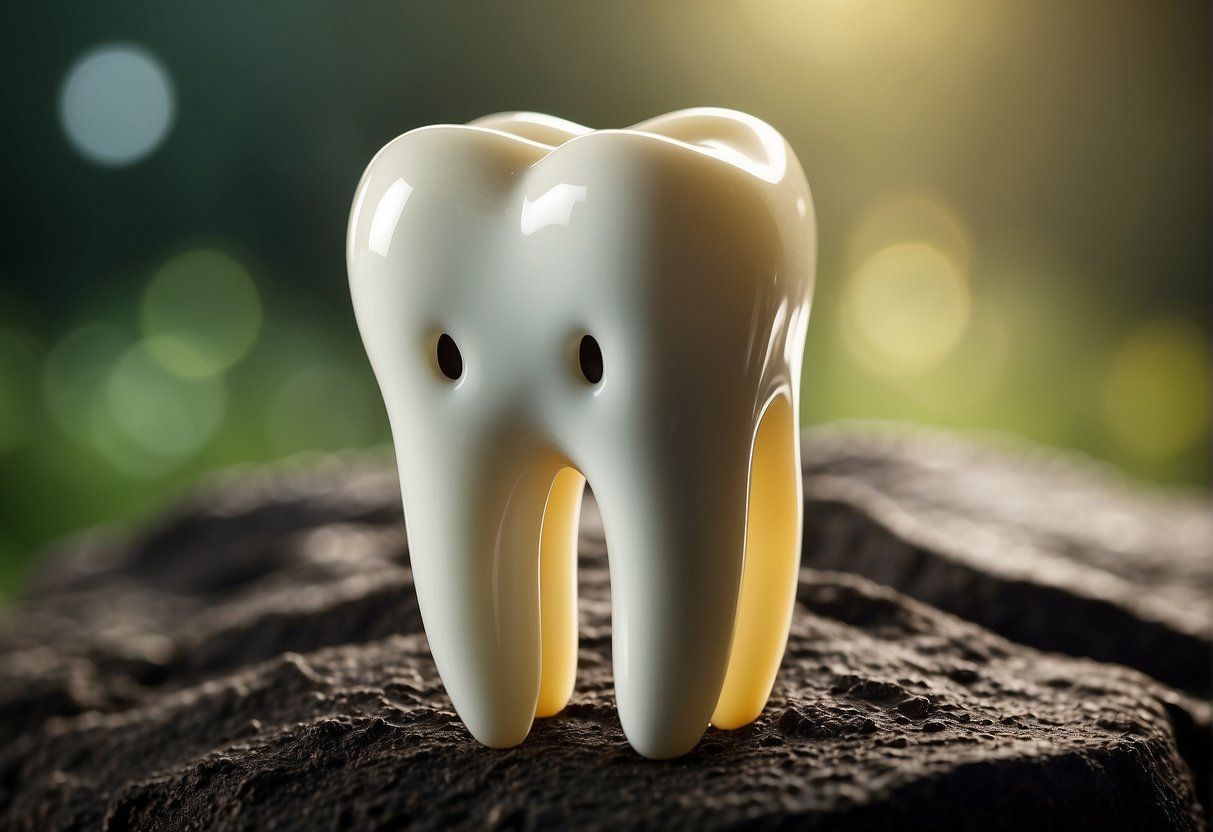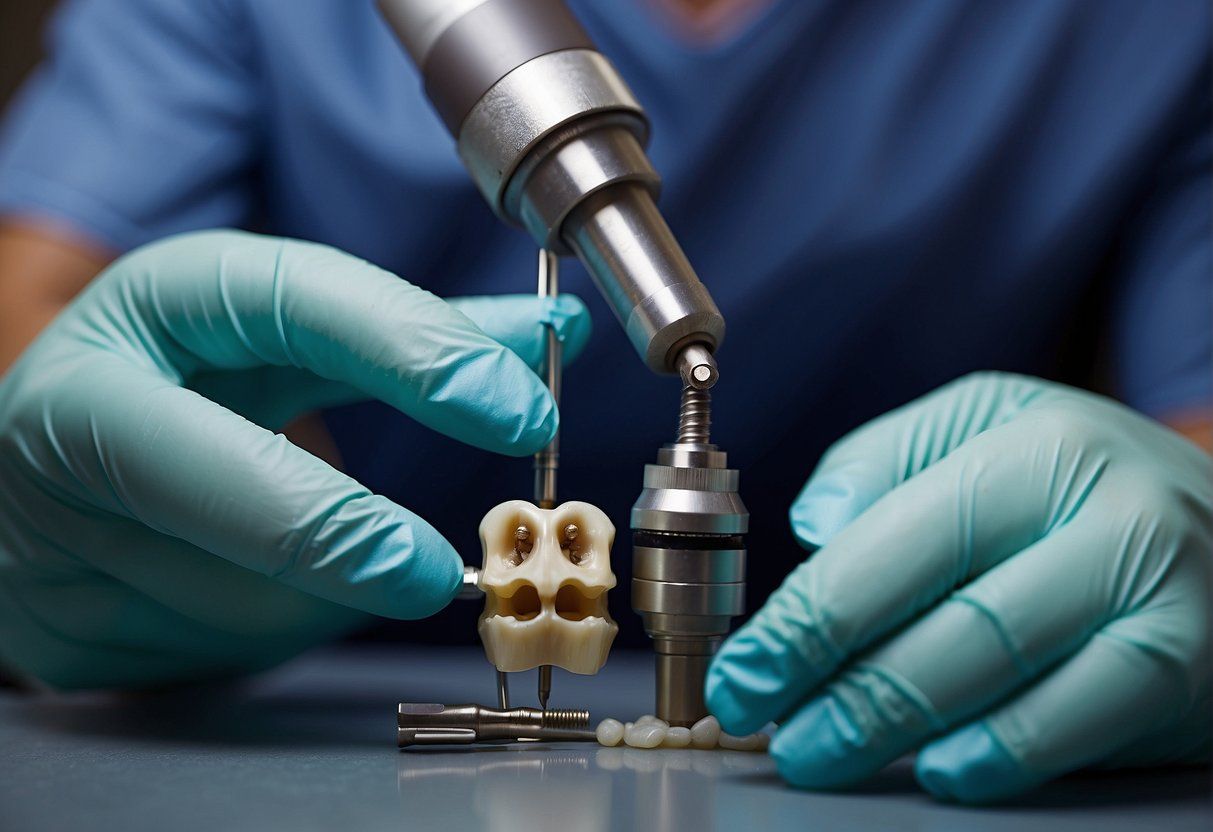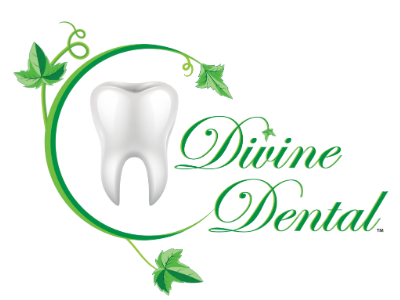Importance of Getting Cavities Filled: Safeguarding Your Dental Health
Cavities are a common dental health issue affecting individuals of all ages. Caused by the demineralization of tooth enamel due to the acidic environment created by bacteria feeding on sugars, cavities can lead to uncomfortable sensations, diminished tooth structure, and if untreated, more severe oral health issues. It is crucial to address cavities promptly to preserve oral health and overall well-being.

Filling cavities is a fundamental dental procedure designed to restore the integrity of a decayed tooth. By cleaning out the decayed part of the tooth and filling the space with a durable material, dentists can prevent further damage and restore function. This intervention not only alleviates pain and sensitivity but also prevents the spread of decay to other areas of the mouth or deeper into the tooth’s structure.
Key Takeaways
- Cavities result from enamel demineralization and require prompt treatment.
- Filling cavities restores tooth integrity and prevents further decay.
- Regular dental visits and good oral hygiene are vital for cavity prevention.
Understanding Cavities
Cavities are a prevalent concern in dental health, often leading to toothache, sensitivity, and, in severe cases, tooth loss. Appropriate management is crucial to maintain oral health.
Tooth Decay and Its Progression
Tooth decay is the process that leads to cavities, and it occurs in stages. It begins when bacteria in the mouth produce acids that attack the tooth’s enamel , the hard outer surface. Over time, these acids can cause a small hole or cavity . Without intervention, the decay can progress past the enamel into the dentin , a less resistant layer. This progression can lead to a significant damage that compromises tooth integrity.
Symptoms and Detection of Cavities
Dental checkups are essential for detecting cavities, which might not always exhibit noticeable symptoms in the early stages. As decay progresses, symptoms can include visible holes in the teeth, toothache , sensitivity to hot and cold, and pain while eating. Dentists often employ X-rays to detect cavities that aren’t visible to the naked eye.
Risks of Untreated Cavities
Ignoring cavities can result in grave consequences for oral health . If untreated, cavities can lead to an infection or abscess , and ultimately, tooth loss . Restorative procedures, such as fillings with composite or amalgam , are employed to treat cavities and prevent further decay .
Benefits of Getting Cavities Filled
Addressing cavities promptly and effectively ensures continued oral health. Dental professionals typically offer a treatment plan that includes fillings to repair the structural damage to teeth.
Preventing Further Decay and Damage
The foremost benefit of getting a cavity filled is the prevention of further tooth decay . When a dentist removes the decayed portion of a tooth, they can halt the progress of the cavity. Fillings , which can be composed of materials such as composite , amalgam , or glass ionomer , are then applied to the void to restore the tooth’s integrity. This action impedes decay from reaching deeper layers of the tooth, which could otherwise lead to more serious issues requiring extensive treatment.
Alleviation of Pain and Sensitivity
Once a cavity is filled, patients often experience a significant reduction in discomfort and tooth sensitivity. Fillings serve to protect the sensitive inner layers of the tooth from exposure to hot, cold, and acidic foods. This mitigation of pain supports a person’s overall comfort and can lessen dental anxiety , as patients realize that treatment can provide relief without undue distress.
Maintaining Oral Health and Function
The placement of fillings also plays a crucial role in maintaining the tooth’s function. Molars, responsible for the bulk of chewing, often bear the brunt of cavities due to their grooved surfaces that can trap food and bacteria. Fillings restore the ability of these teeth to chew effectively, which is essential for proper digestion and nutrition. Moreover, a filled cavity helps to keep proper dental alignment, preventing other teeth from shifting out of place, and supports overall dental hygiene by smoothing surfaces where bacteria might otherwise collect.
The Cavity Filling Procedure
Filling cavities is a common dental procedure aimed at repairing tooth decay. The process typically involves removing the decayed portion of the tooth and replacing it with filling material to restore the tooth’s integrity and function.
Evaluation and Prep Work
Before the cavity filling can commence, a dentist conducts a thorough dental checkup including taking x-rays to evaluate the extent of the decay. Once the need for a filling is confirmed, the area around the affected tooth is prepared. Numbing agents , such as a local anesthetic or numbing gel , are applied to ensure patient comfort. Modern dentistry may employ a laser or air abrasion techniques for more precision.
Options for Filling Material
Patients have various options for filling material which include:
- Composite : A popular tooth-colored blend suitable for visible areas.
- Amalgam : A durable, less expensive material, often used for back teeth.
- Gold : A long-lasting but more costly option.
- Ceramic : An aesthetically pleasing option but can be abrasive.
- Glass Ionomer : Releases fluoride but is less wear-resistant.
Each material has unique advantages, with choice often depending on the cavity’s location, cost considerations, and aesthetic preference.
Steps of the Filling Process
The steps for filling cavities are generally as follows:
- Anesthetic : Application to numb the area.
- Tooth Isolation : To keep it dry.
- Decay Removal : Using a drill , laser , or air abrasion .
- Cavity Cleaning : To eliminate bacteria and debris.
- Filling Insertion : The selected filling material is placed into the prepared cavity space.
- Shaping : The material is shaped to match the tooth’s natural contours.
- Curing : Composite fillings are hardened using ultraviolet light .
- Polishing : To smooth the filling and ensure proper bite alignment.
A root canal may be required if decay has reached the tooth’s root. This involves removing the pulp, cleaning the root canal, and sealing it with a filling. Properly executed, cavity fillings restore the tooth’s structure and function and prevent further decay.
Post-Procedure Care and Maintenance
After getting cavities filled, it is crucial for patients to follow specific aftercare instructions to ensure optimal healing and maintain dental health. The following subsections detail the immediate and long-term care strategies necessary after a dental filling procedure.
Immediate Aftercare Instructions
Immediately following a cavity filling, one may experience numbness due to the anesthetic. It is imperative to avoid chewing on the numb side to prevent biting the cheek or tongue. Additionally, patients should be cautious with hot foods and liquids, as they might not be able to gauge temperature correctly until the numbness wears off.
- Pain
- If pain is present, over-the-counter pain relievers are suggested, following the dosing instructions provided by the dentist or the medication’s labeling.
- Swelling
- For any swelling, apply a cold compress to the outside of the cheek for 15-minute intervals.
- Eating and Drinking
- Stick to soft foods for the first 24 hours.
- Avoid sticky or hard foods that may dislodge the new filling.
Long-Term Dental Care
Long-term dental care is vital for preserving the integrity of the filling and preventing future cavities. Regular dental checkups are recommended to monitor the condition of the filling and for overall dental health.
- Oral Care Routine
- Brush twice daily with fluoride toothpaste to maintain dental hygiene.
- Flossing daily is critical to remove plaque from areas between the teeth that a toothbrush can’t reach.
- Products
- Utilize dental care products that carry the American Dental Association (ADA) Seal of Acceptance for added assurance of their efficacy.
- Crowns
- If a crown is placed, ensure regular inspections with a dentist as it requires the same level of care as a natural tooth.
- Follow-Up Visits
- Schedule follow-up visits with the dentist to ensure the filling and surrounding teeth remain clean and in good condition.
Factors Affecting the Lifespan of Fillings
The durability of dental fillings is influenced by several critical factors, from the materials used to personal habits and quality of dental care. Addressing these areas can ensure the longest possible lifespan for cavity fillings.
Material Choices and Durability
Tooth enamel is the hardest substance in the human body, and dental fillings must be robust enough to interface with it. Composite fillings, made from a mixture of plastic and glass, are popular for their aesthetic appeal but may wear down quicker than other materials. In contrast, amalgam fillings, a blend of metals, are incredibly durable but less visually appealing. Gold and ceramic fillings offer a balance of durability and aesthetics but can be costly.
Impact of Lifestyle and Oral Habits
Lifestyle choices and oral habits significantly affect filling longevity. Individuals who grind or clench their teeth may experience premature wear and damage to their fillings. Consumption of sugary foods can lead to decay around the filling, reducing its lifespan. Regular flossing and avoidance of hard foods can protect fillings and the surrounding tooth enamel .
Regular Dental Assessments and Care
Dental hygiene and dental checkups are imperative in extending the life of cavity fillings. A dentist can identify and address issues such as tooth sensitivity or damage to a filling before they worsen. Regular checkups facilitate prompt replacement or repair and sustain the filling’s integrity.
When to Replace or Repair Fillings
Over time, all fillings will eventually need to be replaced . Telltale signs include wear , damage , or sensitivity indicating that the filling is no longer effectively preventing decay. An early diagnosis and treatment can prevent more extensive procedures later.
Considerations for Special Populations
When managing the dental health needs of special populations, it’s imperative to account for unique considerations that ensure the safety and comfort of the patient during cavity treatments.
Dental Work During Pregnancy
Pregnant women require special attention when addressing cavity treatment to maintain both maternal and fetal well-being. The second trimester is generally the safest time for elective dental procedures, as organogenesis is complete. Nevertheless, it’s critical for dental professionals to consult with the patient’s obstetrician prior to administering any anesthetic or performing fillings .
- Anesthetic : Use only when necessary and in the lowest effective doses to minimize potential toxicity .
- Fluoride Toothpaste : Ensure it’s used safely to help prevent cavities, as fluoride is essential for maintaining dental health during pregnancy .
Managing Dental Anxiety
Individuals with dental anxiety may avoid dental visits, increasing the risk of untreated cavities. For these patients, a calm and soothing environment, clear communication about the procedure, and the use of anxiety-reducing techniques can be beneficial.
- Sedation : Options like laughing gas (nitrous oxide) can alleviate anxiety safely and is quickly reversible.
- Clear Communication : Explaining steps of filling cavities can reduce fear of the unknown.
Advancements in Dental Filling Technology
Recent innovations in dental filling materials and methods of application have revolutionized the way dental professionals treat cavities, offering more durable solutions and reducing patient discomfort.
Innovative Filling Materials
Advancements in filling materials now offer superior alternatives to traditional amalgam. Composite resin , for instance, has seen significant improvements, allowing for fillings that more closely match the natural color of teeth. The American Dental Association recognizes composite resin for its aesthetic quality and functional durability.
Glass ionomer cement is another notable material that has gained traction. It releases fluoride, which helps in preventing further decay. Ceramic fillings have also become more popular due to their strength and aesthetic appeal.
In terms of metals, gold and silver amalgam are now often bypassed in favor of more advanced materials that blend in with the natural tooth color and adhere better to the tooth structure.
Less Invasive Filling Techniques
Modern dentistry has seen a shift towards less invasive techniques for removing decay and preparing teeth for fillings. Traditional methods involving the dental drill are being supplemented and, in some cases, replaced by air abrasion and laser technology.
Air abrasion allows dental professionals to remove decay with a stream of aluminum oxide particles, which is less invasive than drilling and often requires no anesthetic. Lasers, on the other hand, can be used to remove decay within a tooth and to prepare the surrounding enamel for the filling. They offer a high degree of precision, minimizing damage to healthy tissue.
Both air abrasion and lasers contribute to increased patient comfort and quicker recovery times, representing a significant step forward in conservative dental treatment approaches.
The Economic Aspect of Dental Fillings

Dental fillings are a crucial investment in oral health. When considering the cost, one should examine the types of fillings and the role of insurance in managing these expenses.
Cost Comparison of Different Filling Types
Amalgam Fillings:
- Cost Range : Typically the least expensive, ranging from $50 to $150 per filling.
- Durability : They can last 10-15 years, making them a cost-effective option in the long term.
Composite Fillings:
- Cost Range : Prices vary from $90 to $250.
- Aesthetics : More natural-looking, which may be preferred despite the higher cost.
- Durability : Last around 5-10 years, often less durable than amalgam.
Gold Fillings:
- Cost Range : The most expensive, can cost between $250 and $4,500.
- Longevity : Can last 20 years or more, potentially justifying the initial investment.
Ceramic Fillings:
- Cost Range : Similar in cost to gold, between $250 and $4,500.
- Aesthetics : They are tooth-colored and more resistant to staining compared to composite fillings.
| Filling Type | Cost Range | Durability | Aesthetics |
|---|---|---|---|
| Amalgam | $50 – $150 | 10-15 years | Metal color |
| Composite | $90 – $250 | 5-10 years | Tooth-like |
| Gold | $250 – $4,500 | 20+ years | Metal color |
| Ceramic | $250 – $4,500 | 15-20 years | Tooth-like |
The choice of filling type affects the long-term dental expenses. Gold and ceramics offer longevity, whereas amalgam and composite fillings provide cost savings at the expense of frequent replacements.
Insurance Coverage and Payment Options
Most dental insurance plans partially cover the cost of dental fillings, considering them as basic dental procedures. However, the extent of coverage varies:
- Amalgam Fillings: Typically covered at a higher percentage, up to 80% of the cost.
- Composite Fillings: Coverage might be limited to the cost of an amalgam filling on posterior teeth, with the patient paying the difference.
- Gold and Ceramic Fillings: These are often categorized as high-end options, and insurers may only cover the cost equivalent to amalgam or composite fillings.
Many dentist’s offices offer treatment plans that help patients manage out-of-pocket costs. They may also suggest alternate treatment options like a crown or dental implants based on the patient’s needs and budget. Crowns, typically more expensive than fillings, are usually indicated when the tooth structure is excessively damaged. Dental implants represent a significant investment, applicable when a tooth is missing or needs to be extracted.
Patients should carefully review their dental insurance benefits and discuss payment options with their dentist’s office to understand the potential financial impact of their treatment plan.
Preventive Measures and Alternative Treatments
Adhering to proper oral health routines and considering contemporary alternatives can play a crucial role in preventing cavities and in some cases, serve as substitutes for traditional fillings.
Preventing Cavities Through Oral Hygiene
Regular maintenance of oral health is paramount in preventing cavities. This entails brushing with fluoride toothpaste at least twice a day to remove dental plaque, the primary cause of tooth decay. Flossing daily is equally important, as it eliminates food particles and plaque from areas where a toothbrush cannot reach. Dental professionals recommend replacing toothbrushes every three to four months, or sooner if the bristles are frayed. Maintaining a clean mouth through these methods significantly reduces the likelihood of cavities.
- Brush teeth twice daily with fluoride toothpaste
- Floss once per day
- Replace toothbrush every 3-4 months
Alternatives to Traditional Fillings
When cavities do occur, there are alternatives to traditional amalgam or composite fillings. Dental implants and crowns can be used if the structural integrity of a tooth is compromised. Made from ceramics and other biocompatible materials, these options provide durability and aesthetic appeal. In cases of nerve damage or severe decay, a root canal procedure can remove decayed pulp, which can then be followed by the placement of a crown without the need for a dental filling.
- Dental implants : for replacing severely damaged teeth
- Crowns : to cover and protect compromised tooth structure
- Root canal : to treat and preserve a tooth that has severe decay or infection
Conclusion

Prompt treatment of cavities is a crucial aspect of dental health maintenance. Individuals should seek regular dental check-ups to identify cavities early. The treatment of cavities stops the decay process, preventing further deterioration of tooth structure. Untreated cavities can lead to more serious dental issues such as:
- Toothache
- Infection
- Tooth loss
Early intervention is essential, as it is often simpler and less costly. Patients benefit from fillings by:
- Alleviating pain : Restoring comfort and function in the affected tooth.
- Preventing more extensive treatment : Like root canals or extractions.
Maintaining oral hygiene through brushing and flossing, along with professional care, allows for a healthier mouth. A patient’s overall health sees improvement when dental decay is promptly addressed.
Detailed Information About Dental Fillings
Understanding Tooth Gap Filling
- Tooth gap filling, also known as dental bonding, uses a tooth-colored resin to fill spaces between teeth, enhancing the uniformity and appearance of one’s smile. This process not only closes gaps but also corrects minor aesthetic flaws, significantly improving smile aesthetics and boosting confidence.
Post-Filling Tooth Pain: Causes and Solutions
- It's not uncommon to experience some tooth pain after a filling due to sensitivity, the height of the filling, or irritation of the tooth nerve during the procedure. Less frequently, pain might indicate an infection or an allergic reaction to filling materials. Patients experiencing continuous or worsening pain should consult their dentist promptly.
Procedure for Dental Fillings
- The dental filling process involves several steps:
- Numbing the Area: Application of a local anesthetic.
- Decay Removal: Removal of decayed material using specialized tools.
- Tooth Preparation: Cleaning the cavity to eliminate bacteria and debris.
- Filling Application: Placement of filling material like amalgam, composite, or porcelain.
- Curing the Filling: Using a special light to harden the material, if necessary.
- Finishing Touches: Shaping and polishing the filling to fit the bite.
- Bite Check: Ensuring the filling aligns well with the bite.
Aspen Dental's Unique Dental Care Approach
- Aspen Dental offers an alternative to traditional dental insurance through its Aspen Dental Savings Plan. For an annual fee, members receive discounted dental services, including complimentary exams and X-rays. This plan provides cost-effective dental care benefits without the complexities of traditional insurance.
Cost of Tooth Fillings at Aspen Dental
- The cost of a dental filling at Aspen Dental ranges from $157 to $344, depending on various factors such as the location of the tooth, the size of the filling, the type of material used, and the specifics of the patient’s dental plan.
Addressing Partially Answered Questions About Tooth Fillings
- Pain Associated with Tooth Fillings
- While dental fillings are typically not painful due to the use of local anesthesia, some discomfort or sensitivity may occur once it wears off. This is generally mild and temporary. Severe or prolonged pain after a filling, however, should be evaluated by a dentist to rule out any complications.
By integrating these detailed responses and explanations into our blog, we can offer comprehensive guidance to our readers, helping them understand the importance of getting cavities filled and what to expect from the process. This information not only educates but also helps alleviate any anxieties related to dental filling procedures.
Frequently Asked Questions
In addressing the importance of filling dental cavities, several common inquiries arise regarding the consequences of inaction, the procedure experience, and the aftermath. These questions help clarify the necessity and benefits of prompt dental treatment.
What are the potential consequences of not treating dental cavities?
Leaving dental cavities untreated can lead to more severe tooth decay, infections, and possible tooth loss. It can also result in the necessity for more complex procedures like root canals or extractions.
Can a tooth filling procedure cause discomfort or pain?
The tooth filling procedure might involve some discomfort, but dentists use local anesthesia to minimize pain during the procedure. Patients may experience temporary sensitivity or mild soreness after the anesthesia wears off.
How do I determine if a cavity needs to be filled even if there’s no pain?
Dentists can detect cavities through visual examination, x-rays, and the use of specialized dental instruments. It’s crucial to fill a cavity even without pain since decay can spread and worsen over time.
What are the long-term expectations for dental fillings?
Dental fillings can last many years with proper care, but they may eventually need to be replaced. Regular dental check-ups are essential to monitor the condition of fillings and overall oral health.
How much does a typical tooth filling cost?
The cost of a tooth filling varies depending on the size of the cavity, location of the tooth, type of filling material, and regional dental costs. Dental insurance may cover a portion of the expense.
Are there significant benefits to having cavities filled by a dentist?
Having cavities filled prevents the progression of decay, alleviates pain caused by tooth damage, and restores the functionality and aesthetic of the affected teeth. It also helps prevent more costly and invasive treatments in the future.…



